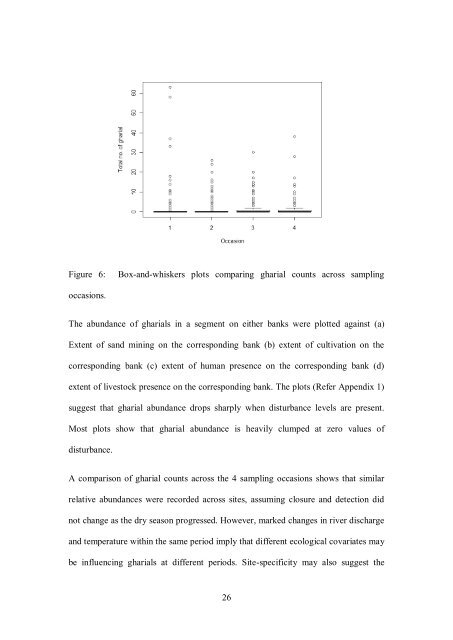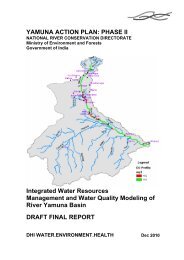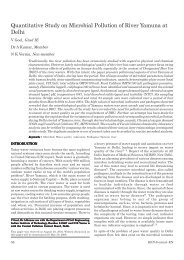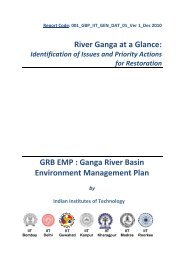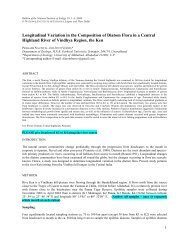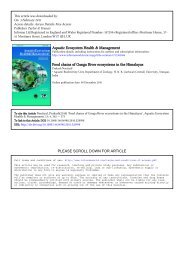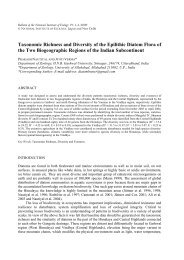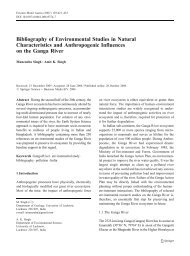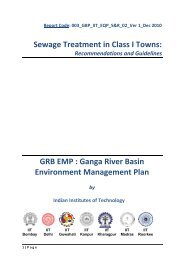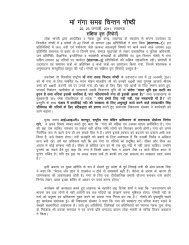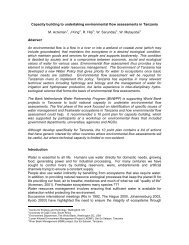Ecological and anthropogenic covariates ... - GANGAPEDIA
Ecological and anthropogenic covariates ... - GANGAPEDIA
Ecological and anthropogenic covariates ... - GANGAPEDIA
You also want an ePaper? Increase the reach of your titles
YUMPU automatically turns print PDFs into web optimized ePapers that Google loves.
Figure 6: Box-<strong>and</strong>-whiskers plots comparing gharial counts across sampling<br />
occasions.<br />
The abundance of gharials in a segment on either banks were plotted against (a)<br />
Extent of s<strong>and</strong> mining on the corresponding bank (b) extent of cultivation on the<br />
corresponding bank (c) extent of human presence on the corresponding bank (d)<br />
extent of livestock presence on the corresponding bank. The plots (Refer Appendix 1)<br />
suggest that gharial abundance drops sharply when disturbance levels are present.<br />
Most plots show that gharial abundance is heavily clumped at zero values of<br />
disturbance.<br />
A comparison of gharial counts across the 4 sampling occasions shows that similar<br />
relative abundances were recorded across sites, assuming closure <strong>and</strong> detection did<br />
not change as the dry season progressed. However, marked changes in river discharge<br />
<strong>and</strong> temperature within the same period imply that different ecological <strong>covariates</strong> may<br />
be influencing gharials at different periods. Site-specificity may also suggest the<br />
26


